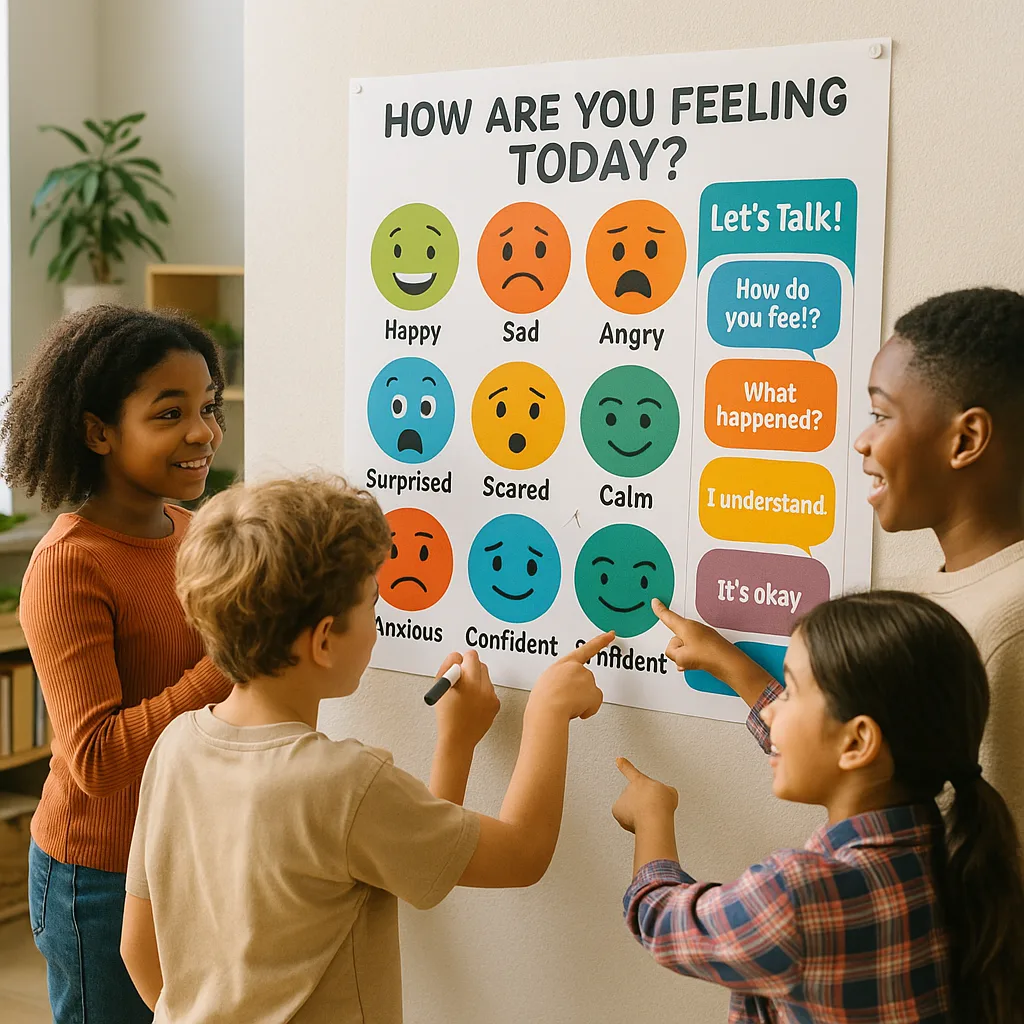Poster Print Machine for Social Skills: Interactive Designs
Understanding the Visual Bridge to Communication
Every classroom holds a symphony of unspoken needs, where some students struggle to find their voice in social situations. As an educational psychologist, I’ve witnessed the transformative power of visual supports in helping children navigate the complex world of social communication. Today, let’s explore how a poster print machine for social skills can become your most valuable ally in creating interactive conversation starters that genuinely connect with students at every developmental level.
Social skills don’t develop in isolation—they flourish through practice, modeling, and most importantly, through meaningful interactions. Research consistently shows that visual supports enhance communication development by providing concrete references for abstract concepts. When we combine this understanding with the creative possibilities of modern printing technology, we unlock new pathways for student growth.
Think of interactive posters as conversation scaffolds. They provide the structure students need while allowing room for authentic expression. Unlike static worksheets, these visual tools invite engagement, spark curiosity, and create natural opportunities for peer interaction.
Emotion Recognition Guides That Connect
Emotion recognition forms the cornerstone of social communication. Yet many students struggle to identify feelings—both their own and others’. This is where thoughtfully designed visual supports make all the difference. Consider creating:
Remember, cultural sensitivity matters deeply here. Ensure your emotion recognition materials represent diverse backgrounds and avoid stereotypical expressions. The goal is helping all students see themselves reflected in these learning tools.
Peer Interaction Games: Where Learning Meets Play
of students show improved peer interaction with visual game supports
report feeling more confident starting conversations
demonstrate improved turn-taking skills
Designing Interactive Game Boards
Interactive poster games transform social skills practice from a chore into an adventure. Imagine a life-sized board game printed on durable poster material where students physically move through conversation challenges. Or picture a “Social Skills Bingo” with squares featuring different interaction goals.
These banner printing machines excel at creating large-format game boards that invite whole-body engagement. Students aren’t just reading about social skills—they’re actively practicing them through movement and play. The Campus Pro 44 Poster Maker Advanced Package offers the width needed for truly immersive game designs while maintaining crisp, engaging visuals.
Conversation Dice
Giant foam dice with conversation prompts on each sideImplementation Tips
Create poster templates for dice faces featuring different conversation starters. Students roll and practice the prompt that lands face-up. Perfect for morning meetings or transition times.Peer Partner Cards
Matching cards that create natural conversation pairsBuilding Connections
Design visually appealing cards where students find their conversation partner by matching complementary images or questions. This removes the anxiety of choosing partners while encouraging new connections.Practical Implementation Strategies
Creating beautiful posters is just the beginning. The magic happens when these tools become integrated into daily classroom life. Let me share some evidence-based strategies that have proven successful across diverse educational settings.
First, establish poster stations throughout your learning environment. These aren’t static displays but interactive zones where students can practice skills during natural transition times. A “Morning Check-In” station near the entrance invites students to identify and share their emotions as they arrive. A “Conversation Corner” equipped with prompt cards encourages peer interaction during free choice time.
Consider implementing a “Poster of the Week” system where you introduce new social skills concepts gradually. This prevents overwhelming students while maintaining novelty and engagement. Your poster print machine becomes an endless source of fresh materials tailored to your students’ evolving needs.
Creating a Culture of Communication
Remember, these visual tools work best within a supportive classroom culture that values communication in all its forms. Celebrate attempts at interaction, not just successes. Create opportunities for students to design their own conversation starters, giving them ownership over the process.
Some of my most memorable moments have come from watching students who previously struggled with social interaction confidently leading peers through poster-based activities they helped create. When we empower students as co-creators of their learning materials, we see engagement soar.
Measuring Success Through Observation
How do we know our visual conversation starters are making a difference? Look for these indicators:
• Increased spontaneous peer interactions during unstructured time
• Students referencing poster prompts in natural conversations
• Decreased anxiety around social situations
• More inclusive play and group work dynamics
• Students creating their own conversation tools
Document these changes through simple observation notes or photo journals. Share successes with parents and administrators to build support for continued investment in visual learning tools. Consider exploring funding options to expand your social skills poster library.
Final Reflections: Building Bridges Through Visual Support
Every poster we create is more than ink on paper—it’s a bridge to connection, a pathway to understanding, and an invitation to communicate. When we invest in visual supports for social skills, we’re investing in our students’ futures.
The journey toward social competence isn’t always smooth, but with the right tools and a compassionate approach, every student can find their voice. Your poster print machine for social skills development becomes more than equipment—it transforms into a catalyst for growth, connection, and community.
Remember to be patient with yourself and your students as you implement these strategies. Social skills develop over time, through practice and gentle guidance. Celebrate small victories, learn from what doesn’t work, and keep creating those visual bridges that help all students cross into meaningful social connections.
Ready to start creating powerful visual supports? Explore our range of banner printing machines and discover how School Poster Makers can support your mission of building social skills through interactive visual learning.


